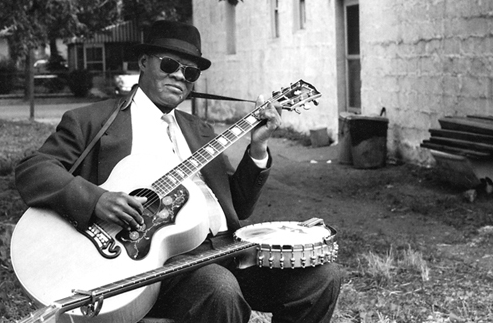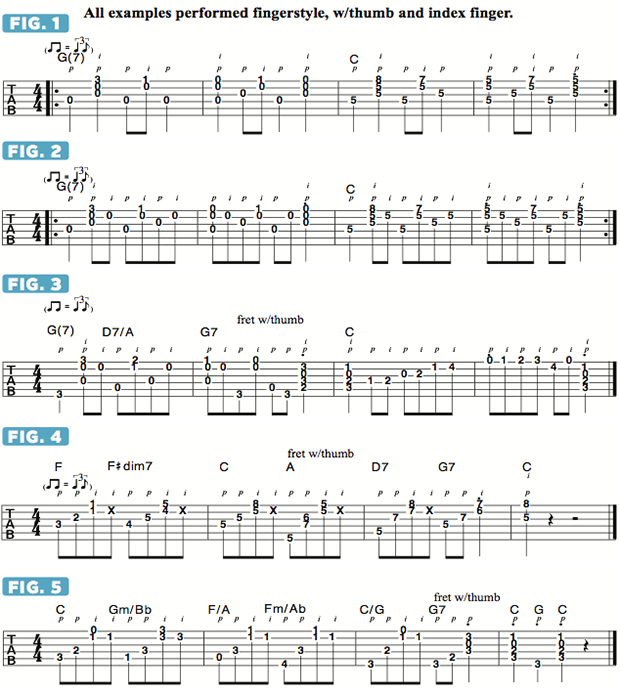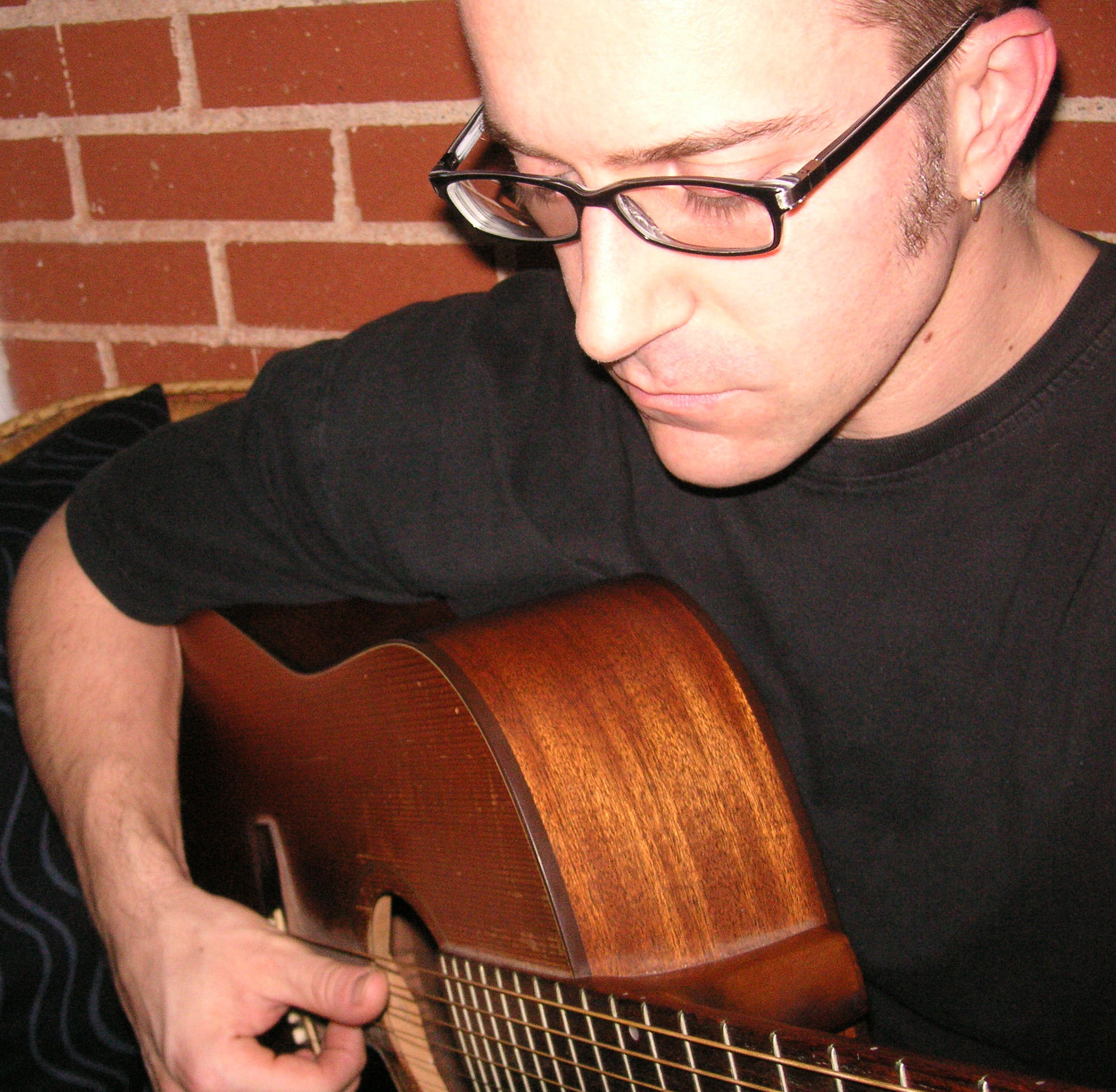The Ragtime-Influenced Fingerpicking of Rev. Gary Davis

American “roots” guitar master (and blind Baptist preacher) Rev. Gary Davis (1896–1972) made his first recording in 1935 while living in the Piedmont region of Durham, North Carolina; along with Blind Boy Fuller and Bull City Red, their flavor of “ragtime infused blues”—mixed with country and popular song stylings—became known as “Piedmont Blues.”
Davis’ guitar style in particular (influenced by Blind Blake, Lonnie Johnson and Blind Willie Johnson, along with jazz and gospel music) was characterized by an alternating thumbed bass and high-string melody, both parts picked simultaneously, a style resulting from trying to adapt piano-based “ragtime” music to guitar.
Davis moved to New York City in the 1940s, where he regularly played and sang on the streets of Harlem (his Harlem Street Singer album was released in 1960), and eventually caught the attention of NYC’s burgeoning folk scene, alongside such artists as Woody Guthrie and Pete Seeger.
Davis became a huge influence on the early Sixties folk revival, and many artists from that scene, such as Peter, Paul and Mary, Joan Baez and Bob Dylan, recorded his song renditions (“Samson and Delilah,” “Cocaine Blues”). Davis’ riveting guitar-vocal versions of “Candy Man” and “Crucifixion,” as well as instrumentals like “Soldiers Drill” and “Slow Drag (Cincinnati Slow Drag),” inspired legions of fingerpickers, including Ry Cooder, Jorma Kaukonen, Donovan, Taj Mahal and Stefan Grossman. Let’s examine Davis’ showstopper “Slow Drag (Cincinnati Flow Rag),” from his 1964 album The Guitar & Banjo of Reverend Gary Davis.
“Slow Drag” is picked with the thumb and index finger exclusively (Davis used a thumbpick and fingerpick). FIGURE 1 illustrates a simplified version of Davis’ main picking pattern, where the D and G strings are alternately thumbpicked while the index finger picks the top two strings, simultaneously using an upward “flicking” motion. FIGURE 2 shows Davis’ authentic (more complex) pattern, which requires an extra index-finger move; immediately after each double-stop, pick upward on the B string (on most upbeats) to dramatically enhance the groove.
In FIGURE 3, this picking pattern is applied to open-position G, D7, G7 and C shapes, similar to the song’s main theme. (Note the required thumb fretting of G7 at the end of bar 2.) Jazz-influenced single-note lines (picked with the thumb and index finger in alternation) punctuate the passage.
Throughout “Slow Drag,” Davis uses many turnarounds—intricate riffs customarily played at the end of a repeating blues form, signaling a return back to its beginning. FIGURE 4 is modeled after one such riff, comprising F, F#dim7, C, A, D7 and G7 chords, requiring a new picking pattern—a four-note motif wherein two thumbpicked notes are followed by a pair of quick index-finger flicks.
We’ll close this lesson with a tag (repeated ending), like Davis uses to bring “Slow Drag” to a close—a “rag tag,” if you will. FIGURE 5 shows a new mix of open-position chords (C, Gm/Bb, F/A, Fm/Ab, C/G, G7 and C) supported by bass notes moving mainly in half steps, the result of using inversions (chords with their third, fifth or seventh in the bass).

Get The Pick Newsletter
All the latest guitar news, interviews, lessons, reviews, deals and more, direct to your inbox!
A singer-songwriter/multi-instrumentalist/film composer, Musician's Institute instructor, and author of 50+ transcription/instructional books, Dale Turner is also Guitar World's "Hole Notes"/"Acoustic Nation" columnist, and the former West Coast Editor of Guitar One magazine. Some of Dale’s old, weird, rare, and/or exotic instruments are featured in his score for WEEDS, the first animated short completed within the Filmmakers Co-op at Disney Feature Animation. His most recent CD, Mannerisms Magnified, was praised by Guitar Player magazine for its "Smart pop tunes that are crammed with interesting guitar parts and tones ... Like what the Beach Boys might do if they were on an acid trip that was on the verge of getting out of control. Yeah!"

